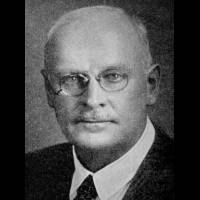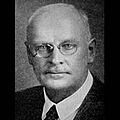Josiah Edward Spurr facts for kids
Josiah Edward Spurr (born in 1870, died in 1950) was an American geologist, explorer, and writer. He was born in Gloucester, Massachusetts. As a young boy, he often got seasick, which meant he couldn't join his family's fishing business. Since he couldn't be a fisherman like his brothers, his parents decided he should go to college instead. He worked hard to pay his way through Harvard University. After graduating, he started his career with the Minnesota Geological Survey. There, he created the very first geological map of the important Mesabi Range in Minnesota.
Contents
Exploring the Alaskan Wilderness
Josiah E. Spurr led two major expeditions in Alaska for the United States Geological Survey. These trips happened in 1896 and 1898. Imagine exploring without phones, airplanes, cars, or electricity!
The Yukon Gold Rush Expedition
In 1896, Spurr led the first team to map the inside of Alaska. They explored the Yukon Territory, where gold had just been found. His books about Alaskan minerals became very important during the Alaska Gold Rush. They were exciting adventure stories, describing challenges like ice dams and lost supplies. He also wrote about meeting Native Americans and missionaries.
Discovering the Kuskokwim River Valley
In 1898, Spurr traveled all the way down the Kuskokwim River. As he went, he named many mountains, rivers, lakes, and glaciers that no one had mapped before. At the end of this trip, he made the first scientific observations of the Mount Katmai volcano. He also saw the valley that later became known as the "Valley of Ten Thousand Smokes." During these expeditions, he met many different people. These included Native Americans, Aleuts, traders, missionaries, and gold prospectors.
A World-Famous Geologist
After his amazing mapping work, Spurr became a top geological consultant around the world. He advised important people like the Sultan of Turkey and wealthy families like the Guggenheims. He was known as one of the best geologists, especially in economic geology. This field uses geology to help find and mine valuable minerals.
Studying the Moon's Craters
When he was 68 years old, Spurr became very interested in how craters on the Moon were formed. He wrote four books about this topic, which greatly helped this new field of study. His last book, "Geology as applied to Selenology," was published just a year before he passed away. Even though some parts of it were later questioned, it was still very important at the time. People thought he was a brilliant and clear writer.
Spurr's Lasting Legacy
Josiah E. Spurr published over a hundred articles in science journals. He also wrote many books, poems, and books for general readers. Several things are named after him to honor his work:
- Mount Spurr: A very active volcano near Anchorage, Alaska.
- Spurr crater: A crater on the Moon.
- Spurrite: A type of mineral.
Many of his papers, letters, and photos are kept safe at the American Heritage Center at the University of Wyoming. Others are at the United States Geological Survey office in Anchorage.
His Children's Achievements
Josiah Spurr had several successful children:
- Edward "Ted" Spurr was a business owner.
- John Spurr worked in publishing.
- William Alfred Spurr became a Professor of Statistics at Stanford University.
- Robert A. Spurr was a chemistry professor at the University of Maryland.
- Stephen H. Spurr was an expert in forestry and forest ecology. He also served as a former president of the University of Texas at Austin.
His grandson, Stephen J. Spurr, who is an economist, recently wrote a biography about Josiah Edward Spurr.
Images for kids
See also
 In Spanish: Josiah Edward Spurr para niños
In Spanish: Josiah Edward Spurr para niños



